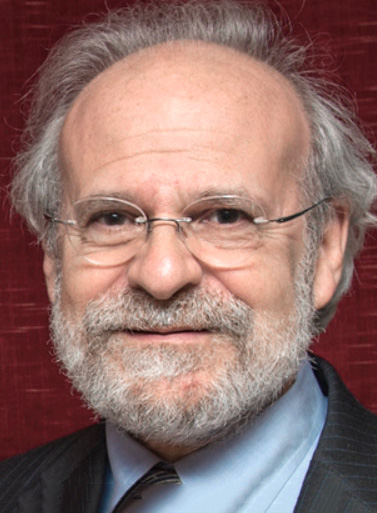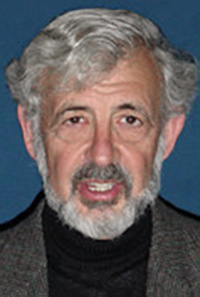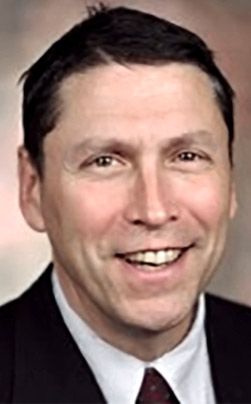

 Our problem isn't the lack of capacity -- it's our inability to achieve simple connectivity. We have abundant capacity but can’t use it because we have gatekeepers who set a price on our ability to communicate and innovate. If we were able to take advantage of what we already have we would find ourselves with a wealth of opportunities rather than having to pay billions to "stimulate" the gatekeepers into letting us create new value.
Our problem isn't the lack of capacity -- it's our inability to achieve simple connectivity. We have abundant capacity but can’t use it because we have gatekeepers who set a price on our ability to communicate and innovate. If we were able to take advantage of what we already have we would find ourselves with a wealth of opportunities rather than having to pay billions to "stimulate" the gatekeepers into letting us create new value.
 I've been privately talking about the theoretical dangers of HTTPS hacking with the developers of a major web browser since 2006 and earlier last month, I published my warnings about HTTPS web hacking along with a proposed solution. A week later, Google partially implemented some of my recommendations in an early Alpha version of their Chrome 2.0 browser... This week at the Black Hat security conference in Washington DC, Moxie Marlinspike released a tool called SSL Strip...
I've been privately talking about the theoretical dangers of HTTPS hacking with the developers of a major web browser since 2006 and earlier last month, I published my warnings about HTTPS web hacking along with a proposed solution. A week later, Google partially implemented some of my recommendations in an early Alpha version of their Chrome 2.0 browser... This week at the Black Hat security conference in Washington DC, Moxie Marlinspike released a tool called SSL Strip...
 In the mid-year 2008 rankings by the Fibre-to-the-Home (FttH) Council, South Korea, Hong Kong, Japan and Taiwan occupy the top four positions in terms of household penetration percentage. Asia Pacific now accounts for more than 27 million of the world’s 32 million FttH connections.
In the mid-year 2008 rankings by the Fibre-to-the-Home (FttH) Council, South Korea, Hong Kong, Japan and Taiwan occupy the top four positions in terms of household penetration percentage. Asia Pacific now accounts for more than 27 million of the world’s 32 million FttH connections.
 The telecom industry five years from now will be unrecognizable. The creative destruction of the Internet broadly writ will be even greater than it has been in the last decade. The major telcos, the major television networks, and the major cablecos -- if they still exist at all -- will have very different revenue models than they have today. That's the good scenario...
The telecom industry five years from now will be unrecognizable. The creative destruction of the Internet broadly writ will be even greater than it has been in the last decade. The major telcos, the major television networks, and the major cablecos -- if they still exist at all -- will have very different revenue models than they have today. That's the good scenario...
 I recently had the opportunity to interview, Richard Whitt, Google's Washington Telecom and Media Counsel, who will be one of the keynote speakers at the upcoming Emerging Communications Conference (eComm 2009) being held on March 3-5 at the San Francisco Airport Marriott. The following is the transcript of our phone conversation and the audio recording of the interview.
I recently had the opportunity to interview, Richard Whitt, Google's Washington Telecom and Media Counsel, who will be one of the keynote speakers at the upcoming Emerging Communications Conference (eComm 2009) being held on March 3-5 at the San Francisco Airport Marriott. The following is the transcript of our phone conversation and the audio recording of the interview.
 Honesty is the best policy. At the risk of anthromorphizing a regulatory agency, at the very least the FCC has not told the complete truth, or put itself in a position not to know the truth. The FCC has contributed to debates about what constitutes credible facts and statistics, and what this data means. For example, soon-to-be former FCC Chairman Kevin Martin asserted as the gospel truth his factual conclusion that cable television operators collectively have a 70% market share... The FCC should acknowledge that it may not know all the facts.
Honesty is the best policy. At the risk of anthromorphizing a regulatory agency, at the very least the FCC has not told the complete truth, or put itself in a position not to know the truth. The FCC has contributed to debates about what constitutes credible facts and statistics, and what this data means. For example, soon-to-be former FCC Chairman Kevin Martin asserted as the gospel truth his factual conclusion that cable television operators collectively have a 70% market share... The FCC should acknowledge that it may not know all the facts.
 While this article specifically discusses the issues of E911 service in the Canadian hinterlands, I fear that the same fiscal shell game is being played by wireless providers all over North America... Grant Robertson writes in The Globe and Mail: Every month when cellphone bills arrive, Northern Canadians are forced to pay for a 911 service they can't access.
While this article specifically discusses the issues of E911 service in the Canadian hinterlands, I fear that the same fiscal shell game is being played by wireless providers all over North America... Grant Robertson writes in The Globe and Mail: Every month when cellphone bills arrive, Northern Canadians are forced to pay for a 911 service they can't access.
 Apple Computer has received high praise for the diversity of applications available for the iPhone. The company shows great willingness to accept third party software innovations. But Apple also solely decides whether to accept and make available any application. Rejected software vendors for the most part do not exist if they do not have shelf space at the Apple store.
Apple Computer has received high praise for the diversity of applications available for the iPhone. The company shows great willingness to accept third party software innovations. But Apple also solely decides whether to accept and make available any application. Rejected software vendors for the most part do not exist if they do not have shelf space at the Apple store.
 The FCC is looking for an organization to provide free, slow, and censored Internet access. The censorship apparently would include email as well as websites. According to an article in today's Wall Street Journal: "Outgoing Federal Communications Commission Chairman Kevin Martin is pushing for action in December on a plan to offer free, pornography-free wireless Internet service to all Americans, despite objections from the wireless industry and some consumer groups [nb. and from me]... The winning bidder would be required to set aside a quarter of the airwaves for a free Internet service [nb. the WSJ hasn't got that part quite right]."
The FCC is looking for an organization to provide free, slow, and censored Internet access. The censorship apparently would include email as well as websites. According to an article in today's Wall Street Journal: "Outgoing Federal Communications Commission Chairman Kevin Martin is pushing for action in December on a plan to offer free, pornography-free wireless Internet service to all Americans, despite objections from the wireless industry and some consumer groups [nb. and from me]... The winning bidder would be required to set aside a quarter of the airwaves for a free Internet service [nb. the WSJ hasn't got that part quite right]."
 My prediction is that LTE and WiMAX are toast. The new great thing will be WRANs (wireless regional area networks). WRAN's will extend and eventually subsume WiFi. The detailed regulations which implement the FCC decision to free the spectrum formerly known as TV white spaces have now been released. They look pretty good from the point of view of someone who believes the unlicensed use of this spectrum has the potential to make a huge difference in the way the world communicates.
My prediction is that LTE and WiMAX are toast. The new great thing will be WRANs (wireless regional area networks). WRAN's will extend and eventually subsume WiFi. The detailed regulations which implement the FCC decision to free the spectrum formerly known as TV white spaces have now been released. They look pretty good from the point of view of someone who believes the unlicensed use of this spectrum has the potential to make a huge difference in the way the world communicates.